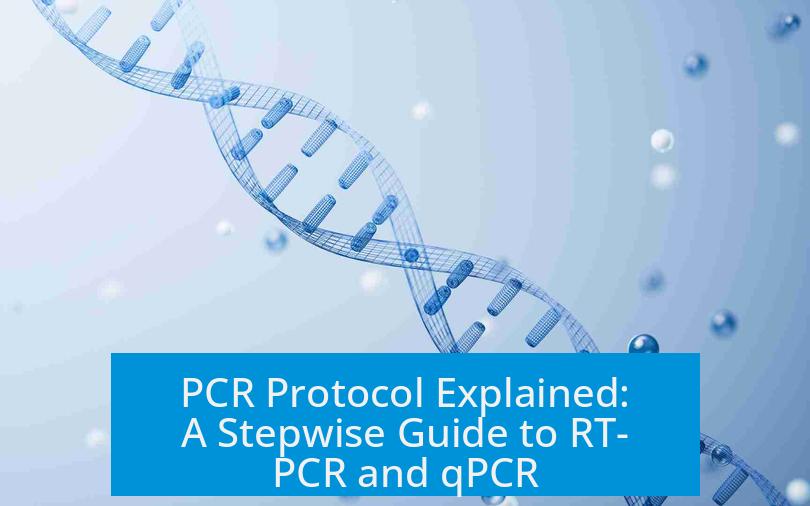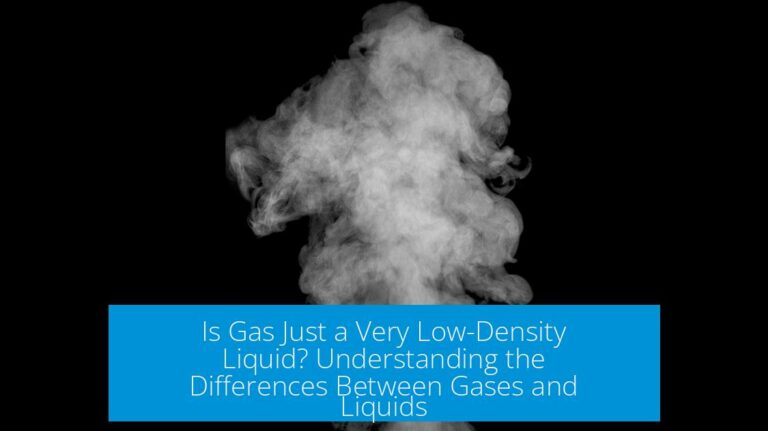PCR Protocol Explained: A Stepwise Guide to RT-PCR and qPCR

Polymerase Chain Reaction (PCR) protocols are central to modern molecular biology. They enable the detection and quantification of nucleic acids from minimal starting material. This article clarifies the PCR protocol incorporating Reverse Transcription (RT) and quantitative PCR (qPCR) steps. It details the workflow, reagents, controls, and best practices for reliable gene expression analysis.
Understanding RT-PCR and qPCR
RT-PCR (Reverse Transcription-PCR) converts messenger RNA (mRNA) into complementary DNA (cDNA) using reverse transcriptase enzymes. This is a crucial first step for analyzing gene expression at the RNA level. RT PCR is reverse transcriptase which makes mRNA into cDNA.
qPCR, or quantitative real-time PCR, amplifies DNA while simultaneously measuring the amount of the target DNA in real time through fluorescence detection. This allows quantitative analysis of nucleic acids during each amplification cycle. qPCR is real-time PCR in which you analyze the amplification of your target in real time.
Combining these approaches, first synthesizing cDNA from RNA (RT step) followed by qPCR, allows precise quantification of mRNA levels of specific genes. So by combining these methods you can analyze and calculate mRNA expression levels of your target gene.
Step 1: cDNA Synthesis (Reverse Transcription)
The starting material for qPCR is typically RNA, not DNA. To analyze RNA expression, the RNA must be converted into stable cDNA. This conversion is called reverse transcription.
- Requires RNA input, reverse transcriptase enzyme, special buffers, dNTPs, and primers.
- This process uses an RT-PCR kit designed for efficient and reproducible cDNA synthesis.
First you need to do cDNA synthesis (this is the RT step)… It is a distinct process from PCR.
You make cDNA from RNA with an RT-PCR kit (reverse transcription kit). Usually this just means adding a single step ahead of qPCR (quantitative PCR).
Step 2: qPCR Reaction Setup
After cDNA synthesis, perform qPCR amplification to quantify the DNA. The reaction commonly uses SYBR Green dye, which binds double-stranded DNA and fluoresces during amplification.
Key Components in qPCR Reaction
- SYBR Green Master Mix: Most labs use pre-made master mixes containing DNA polymerase, dNTPs, buffers, and SYBR Green dye.
- Primers: Specific forward and reverse oligonucleotides targeting the gene of interest.
- Template cDNA: The product of the RT step.
- Water: Molecular biology grade, to adjust final volume.
It is common to separately prepare primer plus water mixes and cDNA plus SYBR master mix before combining to ensure uniformity across replicates.
So I would recommend (once you convert your RNA to cDNA) to mix your primers and water in one batch and your cDNA and SYBR in the other. Split into 8er strips and plate.
Essential Controls
- Endogenous Control: Include at least one housekeeping gene such as GAPDH or ACTB for normalization of expression data.
- Non-Template Controls (NTCs): Reactions without cDNA to detect contamination or primer-dimer formation.
- Dissociation/Melting Curve Analysis: To verify the specificity of amplification products.
And don’t forget to include a) at least 1 endogenous control (housekeeping gene)…
b) dissociation/melting curve analysis. It will extend your cycling time to ~3 hours per plate but it is necessary for making sure that you are getting the product you want.
And include non template controls (NTCs, all the same mix but water instead of cDNA) to check for any cross contamination or primer dimer formation.
Step 3: qPCR Cycling Conditions and Optimization
Thermal cycling in qPCR consists of DNA denaturation, primer annealing, and extension. The cycling protocol depends on primers and master mix, but generally follows these steps:
- Initial denaturation to activate polymerase and denature DNA (~95°C, 2-5 minutes).
- Repeated cycles of denaturation (~95°C, 10-30 seconds).
- Annealing (~55-65°C, 15-30 seconds) where primers bind.
- Extension (~72°C, 15-30 seconds) where DNA is synthesized.
- Data collection during the extension phase for fluorescence measurement.
- Melting curve analysis to confirm product specificity after amplification.
Cycling parameters and dye usage should align with the guidelines from the master mix manufacturer. Optimizing parameters like magnesium concentration and dNTP amounts can improve efficiency and specificity.
Also a protocol of your cycling temperatures would be useful if you need to troubleshoot.
Reagent Concentrations and Preparation
Managing reagent concentrations ensures uniformity and reproducibility. Making a comparative table of stock vs. final concentrations aids this process. Typical qPCR reagent concentrations are:
| Reagent | Stock Concentration | Final Concentration | Role |
|---|---|---|---|
| dNTPs | 10 mM each | 200 μM each | DNA building blocks |
| MgCl2 | 25 mM | 3 mM | Polymerase cofactor |
| Primers | 100 μM | 0.2–0.5 μM | Target-specific amplification |
| SYBR Green Mix | Commercially optimized | As per protocol | Fluorescent dye for detection |
For the qPCR step I suggest making a table with another column entitled ‘final concentration’.
…if something needs to be altered it’s easier to search in the literature what that could be, which is normally dNTPs or magnesium.
Protocol Workflow Summary
- Extract total RNA from cells or tissue using standard RNA extraction protocols.
- Perform reverse transcription to generate cDNA from mRNA using kits like iScript RT.
- Prepare qPCR reaction mix using SYBR Green master mix, primers, and cDNA template.
- Set up qPCR cycling program with appropriate denaturation, annealing, and extension steps.
- Run qPCR and acquire fluorescence data after each cycle to quantify target amplification.
- Perform melting curve analysis post amplification to identify nonspecific products.
- Analyze data using endogenous controls and calculate relative gene expression.
Exactly what exempore mentioned. Your protocol makes sense for a PCR once you made complementary DNA from your template mRNA using reverse transcriptase (RT step)…
Here’s a link to a quantitative PCR mastermix example using SYBR green.
…2) amplify the cDNA using standard PCR, 3) run an agarose gel.
Recommended Kits and Resources
Refer to commercial kits from manufacturers to obtain detailed protocols and reagent compositions for both cDNA synthesis and qPCR. These kits minimize experimental variability and provide optimized reagents.
I would check out manufacturers of cDNA kits and qRT-PCR kits as a starting point…
Terminology Clarification
The abbreviation RT-PCR was earlier used to refer to real-time PCR methods but is now reserved for Reverse Transcription PCR to avoid confusion. The current standard term for quantification during PCR amplification is qPCR.
Just to clarify real-time PCR used to be abbreviated RT-PCR. It has since been changed to quantitative PCR or qPCR. qPCR is therefore the modern term…
Key Takeaways
- RT-PCR converts RNA into cDNA, a necessary step before PCR quantification.
- qPCR amplifies DNA while measuring quantities in real time using fluorescent dyes such as SYBR Green.
- Use commercial master mixes for reproducibility and ease of protocol setup.
- Include housekeeping gene controls and non-template controls to validate results.
- Perform melting curve analysis to ensure target specificity and detect primer dimers.
- Adjust reagent concentrations thoughtfully; magnesium and dNTPs often require optimization.
- Refer to manufacturer protocols for guidance on cycling parameters and reagent handling.
- Use the modern terminology carefully: RT-PCR refers to Reverse Transcription-PCR; qPCR refers to quantitative PCR.
What is the main purpose of combining RT-PCR with qPCR?
RT-PCR converts mRNA into cDNA. qPCR then amplifies and quantifies this cDNA in real time. Combining both lets you measure mRNA expression levels accurately.
Why is melting curve analysis important in qPCR?
Melting curve analysis confirms that the amplified product is specific to your target. It helps identify non-specific products or primer dimers, ensuring accurate results.
What controls should be included in a qPCR experiment?
- At least one endogenous control, like a housekeeping gene, to normalize data.
- Non-template controls (NTCs) to detect contamination or primer dimers.
How should qPCR reaction components be prepared for best results?
Mix primers and water in one batch. Mix cDNA with SYBR Green master mix in another. Then split into tubes or plates. This reduces variability and saves time.
Why use commercial SYBR Green master mixes instead of making your own reagents?
Commercial mixes provide consistent reagents, saving time and improving reproducibility. Preparing all reagents individually often complicates the process without added benefit.
What is the recommended workflow for a typical PCR protocol involving gene expression?
- Perform reverse transcription to make cDNA from RNA.
- Use qPCR with SYBR Green to amplify and quantify cDNA.
- Optionally, run gel electrophoresis to check PCR products in some protocols.





Leave a Comment